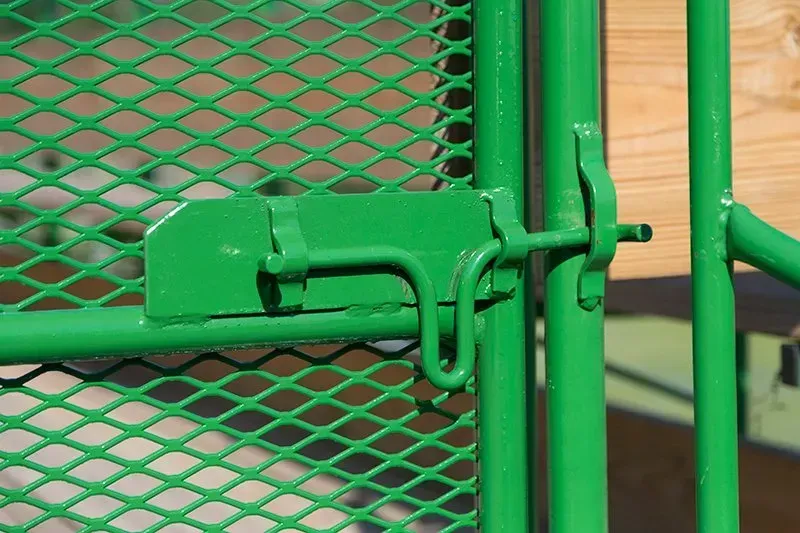
How to Winterize Hay Wagons in Southern Lancaster County
As the last leaves fall in Southern Lancaster County and frost becomes more frequent, your hay wagons are headed toward months of idleness. But winter is not a time to neglect them — without proper preparation, rust, component damage, and deterioration can creep in, making spring startup costly and frustrating.
In this post you’ll learn:
Why winterizing hay wagons matters in our region
What core systems and components you should preserve
A step-by-step winterization checklist
Answers to common questions local farmers ask
By the time you’re done reading, you’ll have a practical action plan to protect your wagons over winter so they’re ready for spring.
Why Winterize Hay Wagons (Especially in Lancaster County)
Winter in Pennsylvania brings cold, moisture, freezing cycles, and snow. These factors can damage wagon frames, fasteners, wheels, bearings, and any exposed parts if left unchecked.
Proper winterization helps you:
Prevent corrosion and rust on metal components
Protect bearings, axles, and moving parts from moisture damage
Preserve tires, rims, and hubs from cracking or deformation
Minimize deterioration of paint, wood, and coatings
Reduce repair time and costs when spring arrives
Even though wagons are simpler than tractors or powered equipment, many of the same best practices apply—and adapting them to wagons gives you peace of mind and longevity for your investment.
Core Components to Address Before Winter
Here are the main systems and parts that demand attention. Think of this as your “zones of care.”
Frame, Rails & Structure
Clean off all dirt, debris, sticky residues, and leftover hay or straw. Moisture held in residue accelerates rust.
Touch up chips or exposed metal with paint or corrosion inhibitor to seal against moisture.
Inspect welds, joints, and fasteners for cracks or looseness.
Bearings, Axles & Moving Parts
Grease all bearings, pivot points, joints, hinges, and any moving parts.
Check for play or wear; replace any components that show excessive slack or damage.
Wheels, Tires & Rims
Inflate tires to recommended pressure (cold), keeping in mind that pressure drops with temperature.
Clean rims and remove buildup that may hide rust or damage.
If possible, lift wagons off tires (using blocks or stands) or rotate position periodically to avoid flat spots.
If storing indoors, remove tires if feasible and store them in a dry, temperature-stable area.
Fasteners, Bolts & Hardware
Go over all bolts, nuts, and fasteners—tighten any loose ones, replace any corroded hardware.
Apply penetrating oil or anti-seize on threads to ease disassembly later.
Wood & Floorboards
Ensure the wood is dry before storage; moisture trapped in wood expands and contracts, causing warping or splitting.
Seal or coat exposed wood surfaces, especially end joints.
Remove or loosely support floorboards to allow air circulation beneath.
Canopy, Cover, Tarps & Accessories
Dismount or loosen covers so snow load or freezing does not stress the frame.
Clean and dry tarp or canopy fabric before rolling or storing it.
Store fabric off the frame to prevent sagging or mildew.
Storage & Shelter
If possible, move wagons into a dry barn, shed, or covered area.
Store off-ground or on supports to reduce direct contact with damp soil.
If outdoor storage is unavoidable, use breathable covers—don’t wrap wagons tightly in plastic that traps moisture.
Winterization Checklist: Step by Step
Use this sequence in late fall, before hard freezes hit.
Final cleaning and drying – Remove debris and let air dry completely.
Inspection and minor repairs – Tighten bolts, repair cracks, replace worn components.
Lubrication and greasing – Apply grease to bearings, hinges, pivot points.
Tires and wheel prep – Inflate, inspect, and elevate or rotate to prevent flat spots.
Protect exposed metal and paintwork – Touch up paint or apply protective coating.
Disassemble or adjust covers – Remove or store canopies properly.
Storage placement – Move wagon into shelter or elevate and cover outdoors.
Periodic winter checks – Inspect monthly for pests, snow, or shifting.
Frequently Asked Questions
Do I need to winterize simple hay wagons the same as powered equipment?
Yes, while you don’t have to deal with engines, rust, bearings, and tires still need attention.Can I leave the wagon outdoors all winter?
Yes, but elevate it off the ground, cover it with a breathable tarp, and protect key components.How often should I check the wagon during winter?
A quick check every few weeks prevents surprises and catches damage early.What lubricant is best for cold weather?
Choose a winter-grade grease or oil that stays fluid in freezing temperatures.Will pests be an issue in winter storage?
Yes, rodents often seek shelter. Clean thoroughly before storage and check periodically.
Conclusion
Winterizing your hay wagons in Southern Lancaster County is a smart way to protect your investment and avoid downtime next season. By following a simple process of cleaning, inspecting, lubricating, and properly storing, you’ll extend your wagon’s lifespan and keep your operation running smoothly when spring arrives.
Gap Hill Farm Wagons can provide replacement hardware, safety features, and custom builds designed with winter maintenance in mind.